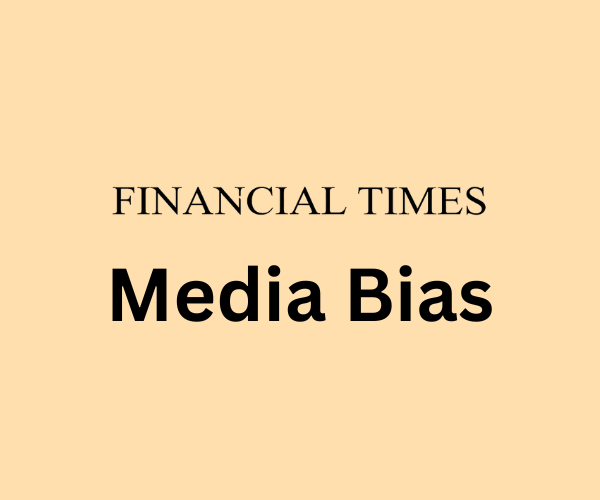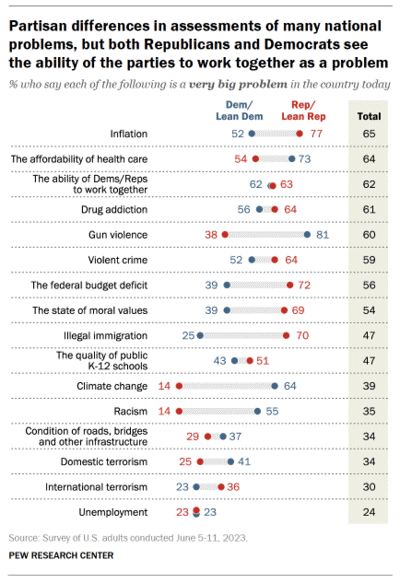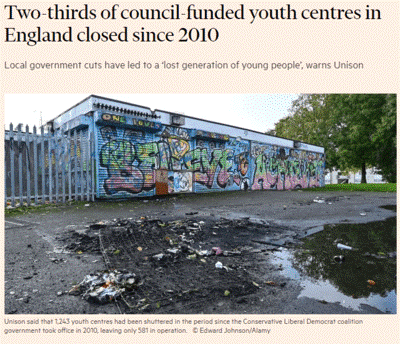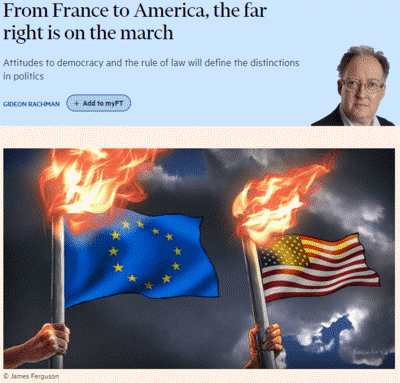
The Financial Times is a print and online news source primarily focusing on economic, financial, and business-related topics. The newspaper was originally established in 1888, standing as one of the oldest establishments continuing to circulate today. Nikkei, Inc., a Japanese media company, owns the publisher, it was sold to them in a billion-plus dollar deal in 2014. According to Similar Web, Financial Times receives over 32 million visitors on its site, making it one of the leading financial information sources in the world.

Source: Pew Research
According to Pew Research, economic issues have consistently been at the forefront of issues in politics for decades, one instance can be viewed in this recent study which showed the effects of monetary inflation were the most important issue for voters overall. Understanding that economic issues are perceived as some of the most important ones and that the Financial Times is one of the biggest outlets providing insight into these issues, it is important to scrutinize whether the stories they produce are biased in any fashion. It is the goal of this article to provide insight into this, in addition to shedding light on factors that contribute to media bias in general.
How Does Biasly Rate News Sources?
Biasly’s algorithms produce bias ratings to help provide multiple perspectives on given articles. Biasly has analyzed 200,000+ news articles from more than 3,200 news sources through our A.I. technology and team of political analysts to find the most factual, unbiased news stories.
Biasly determines the degree of political bias in news sources by using Biasly’s Bias Meter Rating, in which Biasly’s team analyzes media sources’ reliability and bias and produces three scores, a Reliability Score that measures the accuracy of media sources; an A.I. Bias Score, evaluated by A.I.; and an Analyst Bias Score evaluated by political analysts. These scores are rated based on seven rating metrics including Tone, Tendency, Diction, Author Check, Selection/Omission, Expediency Bias, and Accuracy. These metrics help our analysts to determine the political attitude of the article.
Our A.I. machine-learning system employs natural language processing and entity-specific sentiment analysis to examine individual articles and determine their bias levels. By analyzing the key terms in an article such as policies, bias phrases, political terminologies, politicians, and their nicknames, the algorithms can rate the attitude of the text. Bias scores range from -100% and 100%, with higher negative scores being more Liberal and higher positive scores being more Conservative, and 0% being neutral.
Is Financial Times Politically Biased?
The rating Biasly gives a news organization is predicated on two methods, the first on A.I.-based algorithms, which gave Financial Times an AI Computer Bias Score of Center-Left. The second rating is provided by Biasly’s analysts who gave them an Analyst Score of Center-Left. With both methods giving the source a Score of Center-Left that means, generally, that they provide a neutral insight into issues, and providing a balanced point of view.
On social media, the balance that the Financial Times provides can be seen with a variety of opinions being shared by commenters with a range of views on different topics. One example of this can be seen on the outlet’s X page, where they promoted the article “G7 Threatens China With Further Sanctions Over Russia War Support”:
“G7 Countries must stop doing business with China”
“Who gives G7 authority to dictate what is right or wrong?”
G7 Countries must stop doing business with China.
— clement charles (@levante1234) June 14, 2024
Who gives G7 authority to dictate what is right or wrong?
— A股证券交易员 (@ANDREW_FDWT) June 14, 2024
These comments are an example of how the generally balanced perspective of the Financial Times cultivates a viewer base with a variety of opinions. An outlet that receives feedback typically supporting a single side can sometimes indicate that the publication often releases content that leans towards a single side, thus fostering an audience that leans more conservative or liberal. This is one way to help discover if a news source is biased in one direction. We will delve deeper into different ways to recognize biases further along.
Before we begin, we need to discuss bias. Bias is a natural function of humans, and we can express it both consciously and unconsciously. Bias is one of the most fundamental forms of pattern recognition in humans. This isn’t to lower the bar and say that “all things are biased,” but to explain how we may come to trust certain news organizations that display coverage patterns.
On the media’s part, there is an incentive to retain audiences, encourage them to purchase subscriptions, and rate products positively. Bias is a two-way street, people want to see news stories about things they care about, and the media needs viewers to continue their operations. This creates a positive feedback loop that influences what stories are covered and from what perspective. This also explains the actions of more liberal news organizations.
Analysis of Bias in Financial Times Online Articles
Considering the Score of Center-Left Biasly gave the publisher, it is fair to say that most articles are set at a balanced viewpoint regarding bias. However, in terms of individual articles, there may be more variance in the level of bias throughout. In this section, we will search to find out if there are biases contained within the Financial Times’s fact-based reporting.
To determine this we will investigate several factors, Author, Tone, Tendency, Diction, and Expediency Bias.
In the article “Two-Thirds of Council-Funded Youth Centres in England Closed Since 2010,” William Wallis emphasizes how the closure of youth centers has resulted from low government spending. This story, Rated as Somewhat Liberal according to Biasly, maintains a slightly Liberal Tone and Tendency throughout.
First, we can see the employment of this tone in an example here:
“More than two-thirds of council-funded youth centres have been closed in England over the past 14 years, owing to a prolonged squeeze on local government finances, according to research by Unison.”
The author here used the term “more than two-thirds”, this emphasizes the impact of the problem at hand, since the author could have simply used the exact number of centers closed. Using this term may encourage the reader to overestimate the extent of the issue. The following blame on lack of finances, especially the term “prolonged squeeze” may also prime the reader to be more flavorful of liberal policies involving increased government spending.
“Local government budgets were among the hardest hit in the period after the financial crisis when David Cameron’s government slashed funding to the public sector as part of its austerity policy.”
The insertion of “David Cameron” a conservative party leader in addition to the use of the term “slashed” may imply to the reader that the budget cuts after the financial crisis were more severe than reality. Additionally, the connection to the conservative leader may lead the reader to blame the party for the issue, when in fact a coalition government was in place at the time. The author also provides no alternative opinions regarding the cause of the closures such as attendance levels or the fiscal sustainability of these centers.

Source: Financial Times
Expediency Bias is also present in this article, looking above to the title and image displayed, a dilapidated building with graffiti is shown below the title. This image emphasizes ideas such as crime and poverty, implying that the closure of youth centers leads to such effects. The author provides no evidence of this within the article.
The author of this article, William Wallis, is the United Kingdom correspondent for the Financial Times. Generally, the author writes stories that delve into issues on both sides of the aisle, and most reports are based on the facts available.
Investigating the Tendency of the article, or the consistency of the tone throughout, it can be seen that the author’s tone is slightly liberal in a few instances. Although the Tone used in these instances is biased, most of the article is not. The author largely remains neutral and displays the opinions only of those he referenced throughout. The occasions where this liberal tone did occur should be noted although.
In terms of the Diction used by the author, there were a few instances where he used specific terms that emphasized a problem with the lack of government spending.
“The collapse in youth services has put teenagers ‘at risk of isolation and of being swept into gang and knife culture’”
He referred to the closure of centers as a “collapse” in the youth services department, which may imply that the subsection of government is almost completely nonfunctional.
“Local government budgets were among the hardest hit in the period after the financial crisis when David Cameron’s government slashed funding to the public sector as part of its austerity policy.”
Another, from a quote in the previous section where he used the word “slashed” regarding budget cuts, could lead the reader to believe the number is higher than reality.
Although this article had a few instances of bias, these excerpts do not represent the story in its entirety, never mind the Financial Times as a whole. One example of this is the article “Joe Biden Hits Democratic Fundraising Record with Star-Studded $28mn LA Event” which was Rated as Center in Bias according to Biasly and contained little to no bias throughout the article.
Analysis of Financial Times Opinion Articles
In order to properly understand the context of this section, the difference between fact-based reporting and opinion articles must be discerned. Generally, authors for fact-based reporting do not seek to insert their personal opinions into the matter they are discussing, although as seen in the section above this can still happen. Opinion stories, on the other hand, are the opposite as the purpose of this style of article is for the author to divulge their opinion. The result is commonly a lack of objectivity, as the author usually argues for a certain side of an issue.

Source: Financial Times
One example of this from the Financial Times is the article “From France to America, The Far Right is On The March”, where the image below the title depicts the burning of E.U. and U.S. flags. This immediately implies to the reader that the actions right-leaning groups are taking are either violent or dramatic.
On the other hand, the opinion piece “Campaigning Parties Should Tell the Truth About Debt Servicing” has a title and image that do not contain bias, this allows the reader to engage with the article with a clean slate, and to read fully the author’s arguments along with the proper context.
It is important to underscore that the opinion articles released in the Financial Times are not the majority of articles, they are a small portion of what is published. However, opinion articles can often be contentious, thus it is helpful still to understand the biases occurring, in addition to the differences between fact-based reporting and opinions.
Who Owns Financial Times
Nikkei, inc., which owns the Financial Times is an employee-owned company, thus the person who likely has the most influence over the Financial Times is the CEO John Ridding.

Source: Flickr
The CEO has tremendous influence over the operations of the Financial Times, including the level to which bias influences its articles. This, however, does not seem to be the case as the publication has been Rated as Center-left according to Biasly.
How to Evaluate and Uncover Bias
It can often be difficult to tell if the news you watch is biased. If you have settled on a news channel, it’s usually because you trust the information you are gaining. Unfortunately, many trust the information they are hearing because it confirms what they already believe. This is referred to as “confirmation bias.” It is important to challenge your beliefs and get third-party verification that what you are hearing is the full story. This is why we recommend using Biasly to compare different news stories side-by-side using our bias ratings to figure out what both sides think of a political issue.
The Bias Rating of Center-Left which Biasly gave the Financial Times means that they generally publish articles with a balanced, low-bias perspective. However, as it was shown previously throughout this article, there may be instances where the rating given to the publisher as a whole may not apply to an individual article. Being aware of the factors explained within this article can help one understand where bias comes from, to help with this, using websites like Biasly can be useful in providing insight.






















